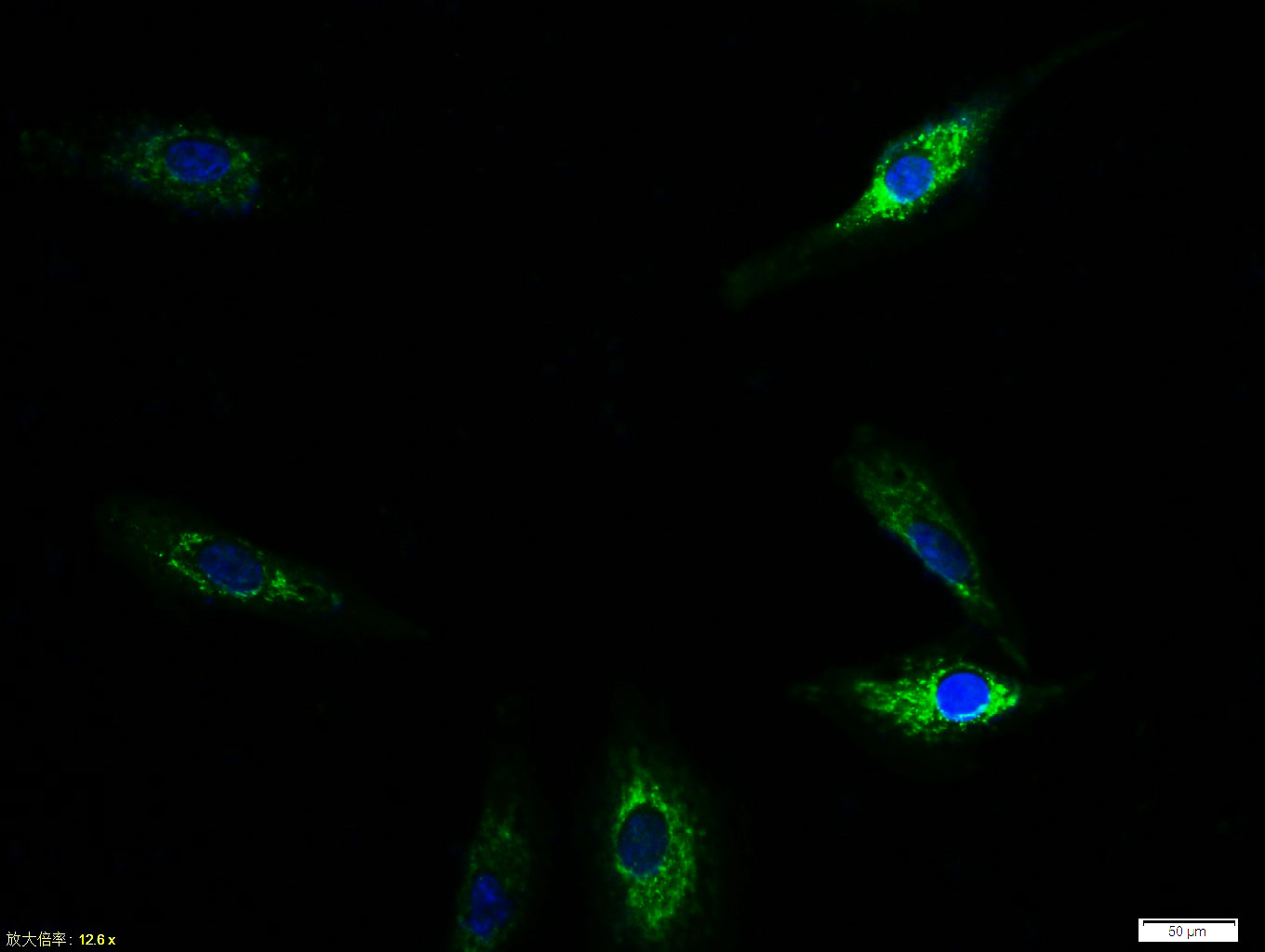
HUVEC cells(black) were fixed with 4% PFA for 10min at room temperature,permeabilized with 0.1% PBST for 20 min at room temperature, and incubated in 5% BSA blocking buffer for 30 min at room temperature. Cells were then stained with _x000D_ TIE2/CD202b Polyclonal Antibody(bs-1300R)at 1:50 dilution in blocking buffer and incubated for 30 min at room temperature, washed twice with 2% BSA in PBS, followed by secondary antibody(blue) incubation for 40 min at room temperature. Acquisitions of 20,000 events were performed. Cells stained with primary antibody (green), and isotype control (orange).
TIE2/CD202b Polyclonal Antibody

BS-1300R
ApplicationsFlow Cytometry, ImmunoFluorescence, Western Blot, ELISA, ImmunoCytoChemistry, ImmunoHistoChemistry, ImmunoHistoChemistry Frozen, ImmunoHistoChemistry Paraffin
Product group Antibodies
ReactivityBovine, Equine, Human, Mouse, Porcine, Rat
Overview
- SupplierBioss Antibodies
- Product NameTIE2/CD202b Polyclonal Antibody
- Delivery Days Customer16
- ApplicationsFlow Cytometry, ImmunoFluorescence, Western Blot, ELISA, ImmunoCytoChemistry, ImmunoHistoChemistry, ImmunoHistoChemistry Frozen, ImmunoHistoChemistry Paraffin
- Applications SupplierWB(1:300-5000), ELISA(1:500-1000), FCM(1:20-100), IHC-P(1:200-400), IHC-F(1:100-500), IF(IHC-P)(1:50-200), IF(IHC-F)(1:50-200), IF(ICC)(1:50-200)
- CertificationResearch Use Only
- ClonalityPolyclonal
- Concentration1 ug/ul
- ConjugateUnconjugated
- HostRabbit
- IsotypeIgG
- ReactivityBovine, Equine, Human, Mouse, Porcine, Rat
- Storage Instruction-20°C
- UNSPSC12352203
References
- Fluorescence-Activated Cell Sorting Is More Potent to Fish Intervertebral Disk Progenitor Cells Than Magnetic and Beads-Based Methods. Frauchiger DA et al., 2019 Oct, Tissue Eng Part C MethodsRead more
- Fibroblast growth factor signals regulate transforming growth factor-beta-induced endothelial-to-myofibroblast transition of tumor endothelial cells via Elk1. Akatsu Y et al., 2019 Aug, Mol OncolRead more
- Correction to: Angiopoietin-1 receptor Tie2 distinguishes multipotent differentiation capability in bovine coccygeal nucleus pulposus cells. Tekari A et al., 2019 Jan 31, Stem Cell Res TherRead more
- Bone marrow mesenchymal stem cells-conditioned medium enhances vascular remodeling after stroke in type 2 diabetic rats. Xiang J et al., 2017 Mar 22, Neurosci LettRead more
- Expression of angiopoietins in central nervous system hemangioblastomas is associated with cyst formation. Li X et al., 2017 Feb 3, Neurosci LettRead more
- Angiopoietin-1 receptor Tie2 distinguishes multipotent differentiation capability in bovine coccygeal nucleus pulposus cells. Tekari A et al., 2016 May 23, Stem Cell Res TherRead more

